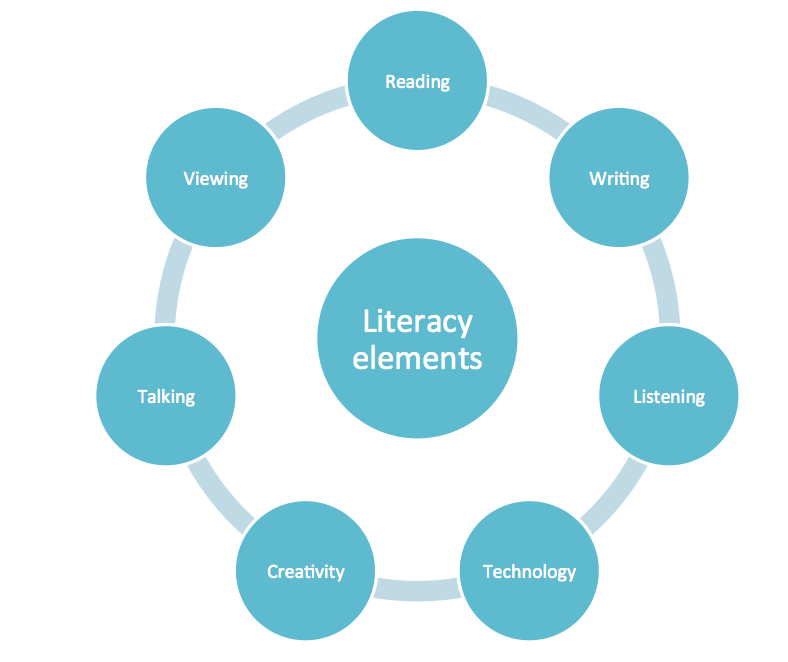In recent years it has been recognised that literacy encompasses a set of skills and strategies that are wider than the traditional reading and writing approaches had suggested. Talking, listening, viewing, shaping, and using technology are now included in our contemporary understandings of literacy. The focus is on multi-literacies as they recognise that the learner needs to engage with texts in print, oral and multi-media domains, in a wide range of contexts, for different purposes in order to understand the world in which they live.
Literacy Elements of Latch-On
The Latch- on program is comprised of interwoven elements: talking and listening, viewing, reading, writing, the use of technology, and creativity.
Talking and Listening
Speaking supports literacy activities as well as being an important aspect of literacy in its own right. Talking is central in Latch-On. By talking, learners use language to communicate effectively. Every literacy activity should begin with talking and talking is an integral component of all reading and writing activities, for example, brainstorming, talking about ideas, talking about experiences, and talking about the task.
Viewing
Visual literacy is developed through activities such as viewing and discussing pictures, illustrations, photos, TV programs and movies. These activities also provide a bridge from talking to reading and writing tasks as the verbal analysis of concrete objects such as photos both aids memory and provides a focus for such tasks.
Reading
Reading is a complex, dynamic activity. It involves actively constructing meaning from texts. To do this a reader must be able to understand letters and symbols and how they come together in words and sentences to form connected texts. A reader must be able to ask questions about a text for example: does it make sense, do I agree with the ideas or is this text accurate? Perhaps the area of greatest importance in teaching reading is motivation. Modifying existing texts, or creating new texts to suit the interests and needs of the learner ensure that all learners have the best opportunities to construct meaning from text.
Writing
Learners need to be supported as they develop control over the processes of composing and shaping texts. They need to write in different genres, for example, poems, recounts, instructions, explanations, articles for a newsletter, and letters. Contexts for writing should be varied and involve meaningful tasks. Learners need real audiences for the publication of their writing so they can begin to understand relationships between reading and writing.
Technology
The Latch-On program has focused on using computers that learners would encounter in their everyday environment – home/libraries/workplace. Computers are no longer a tool for an elite group, they can provide opportunities for diverse users. Using computers to word process writing, to search the web, and to send and receive e-mails are regular activities in the program.
Creativity
Some activities within each module lend themselves to drama, art, poster making, photographic essays and displays. Literacy activities draw on learners’ creativity and imagination allowing them to express ideas, and their relationships with their communities, in genres that are not restricted by more formal text types of reading and writing.
Sequencing
Sequencing activities both within and across activities are integral to developing literacy skills. Understanding and applying knowledge about sequencing, including explicit vocabulary, is important in clarifying thoughts when writing, in assisting learners to recount events orally in a cohesive manner, and in developing comprehension.
Next: The evidence
